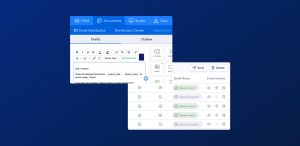January 1, 2021 is the first date that your 40-Act funds can switch from shareholder report delivery (printed or electronic) to a new online publication process known as “notice-and-access.” Notice-and-access is just as it sounds: investment fund reports can be made accessible online (for free), but you have to mail a notice to investors when the information is available.
2021 feels a long way off, but your compliance teams actually need to take action very soon, if they wish to be among the first investment firms to put the new practice into effect. That’s because the rule has a two-year disclosure period: you must notify shareholders of your intent to switch, two years in advance of actually doing it. If you want to begin the notice-and-access approach on January 1, 2021, you must have concluded the two-year disclosure period by December 31, 2020.
So it’s time for compliance folks to mark their calendars: January 1, 2019 is the earliest notification starting point.
An investor-first modernization effort
Rule 30e-c is part of a broader, three-part SEC effort to modernize shareholder information in a way that prioritizes the experience of investors. Notice-and-access, the first component, is all about how information is distributed and accessible to investors. The rule essentially says that mutual funds, ETFs and any other retail product governed by the 1940 Investment Act no longer have to deliver shareholder reports (electronic or snail mail). Instead, they have the option to publish reports in a publicly accessible, free website as long as they also mail a paper notice of publication to investors. Of course, if an investor requests paper copies of reports, funds must comply.
Build Content-Rich Sales Portals
The second component of the SEC’s efforts is about the content in reports. They’ve opened a comment forum requesting input about the actual information in investor reports, looking in particular for the every-man input: the Main Street investor. Their aim is to make shareholder information interactive and personalized, just like every other kind of content on the internet. (And your soft drink – did you know you can personalize your soda now?)
The third leg is shaping up to be the most contentious – a review of the fees that intermediaries charge fund companies to cover the costs of distributing information to shareholders. Consider the 401(k) market: millions of investors hold funds in their retirement accounts through a brokerage, so the fund sends information to the brokerage, who sends it to the end investor. Brokerages charge fees to funds to cover the cost of forwarding the information, and in turn, they are usually hiring a third-party business to actually manage the mailing process. The comment forum for this review has attracted some lively and contentious letters on both sides. The main sticking point seems to be that brokerages are the ones negotiating fees with the third-party fulfillment groups, such that the funds themselves are not involved in the cost control for the process. A number of large firms have submitted public comment letters, if you want the full inside-baseball discussion.
How it affects your team
In many cases, firms are already doing the access part. If you conduct a quick search of your favorite mutual fund, you’ll probably find the most recent shareholder report within a few clicks. Regardless, your firm has some time to figure out the nuts and bolts of how to make shareholder reports available under notice-and-access rules. For now, your compliance team’s focus should really be on just one spot: prominent disclosure of your intent to switch to online report delivery. Start with a hard-to-miss statement on the cover of the fund’s prospectus and current shareholder reports.



